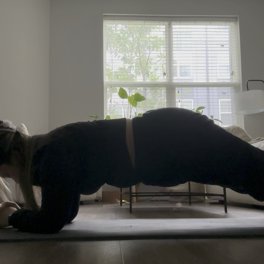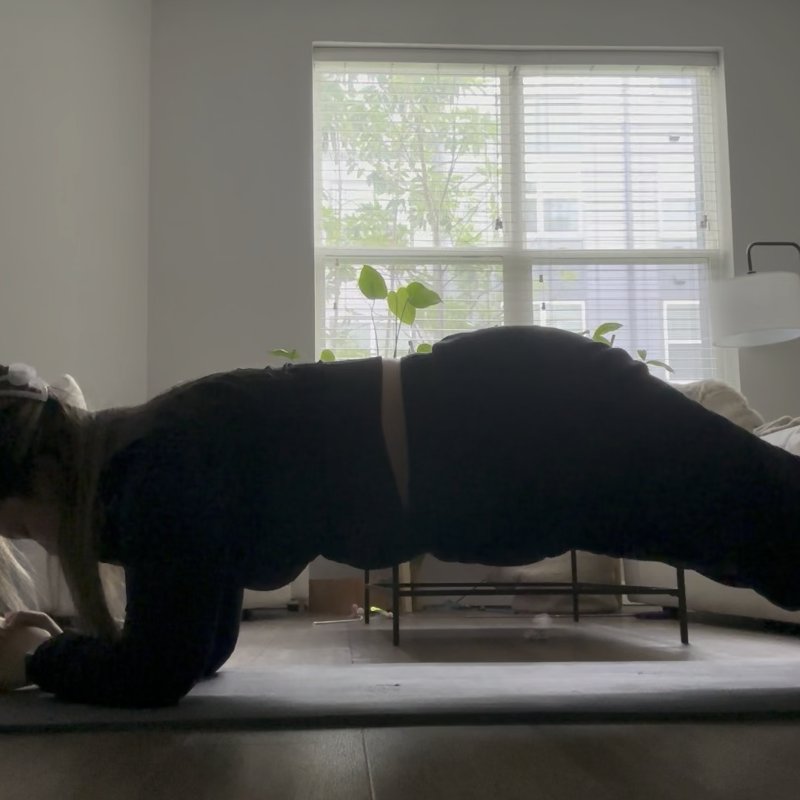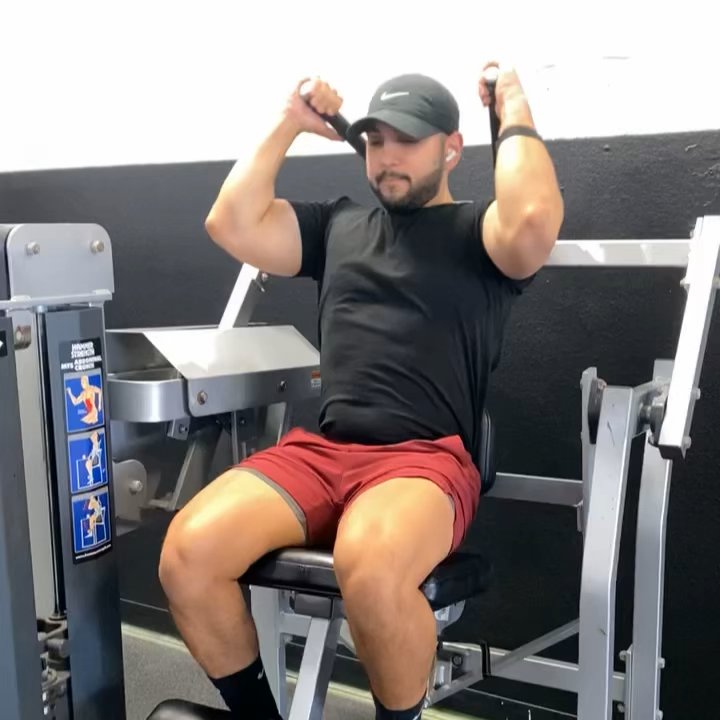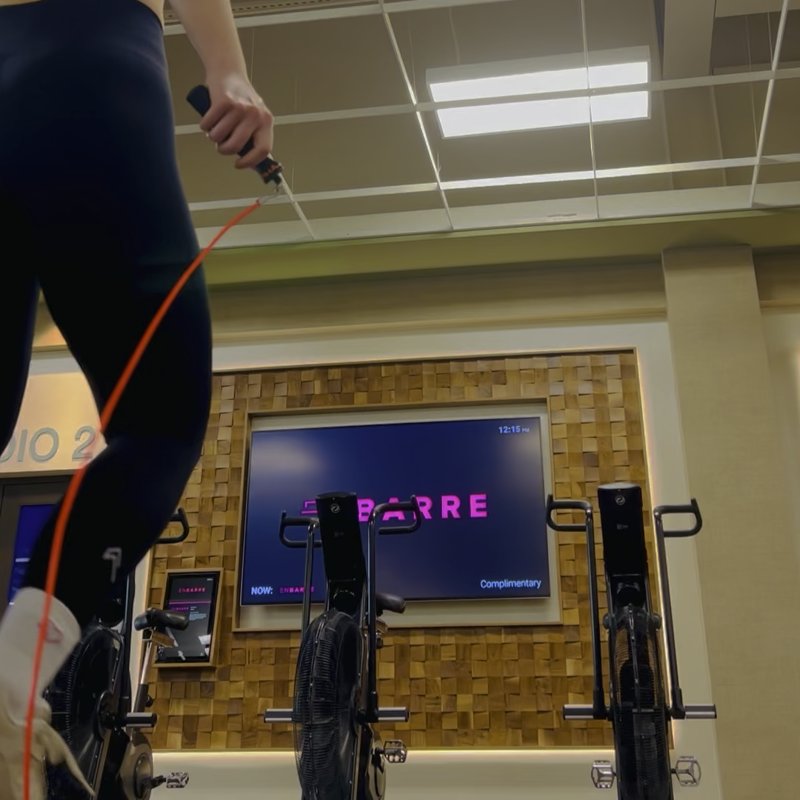Plank: The Ultimate Guide
The Plank is a fundamental isometric core exercise that engages the entire midsection while also requiring activation from the shoulders, chest, and legs to maintain a straight, rigid position parallel to the ground.

Quick Facts
Key Benefit
Develops core strength and stability without spinal flexion
Primary Muscles
Obliques
Secondary Muscles
Erector Spinae, Glutes, Medial Deltoids, Pectoralis Major, Quadriceps
Equipment
bodyweight
Difficulty
Beginner
Type
Isometric
In This Guide
Ready to master the Plank?
Track your progress, see improvements over time, and build strength consistently.
Download GravitusThe Plank is one of the most effective and accessible core exercises, serving as a foundational movement for core strength and stability development. Unlike dynamic core exercises that involve movement, the plank is an isometric exercise—meaning you hold a static position that creates tension throughout the body without moving.
While the plank appears simple, it challenges multiple muscle groups simultaneously and requires full-body coordination. The primary focus is on the core muscles, but a proper plank also engages the shoulders, chest, back, glutes, and legs, making it an excellent total-body exercise that improves posture, reduces lower back pain risk, and enhances performance in other exercises and daily activities.
What makes the plank particularly valuable is its scalability—it can be modified to suit any fitness level and progressively overloaded by increasing hold time or adding various challenges. Whether you're a beginner establishing baseline core strength or an advanced athlete looking to enhance stability, the plank deserves a place in your training routine.
Benefits of the Plank
The plank delivers numerous physical benefits while requiring minimal equipment and space, making it an excellent addition to any workout regimen.
Core Strength & Stability
Engages all layers of abdominal muscles (including the deep transverse abdominis) and obliques to build functional strength that supports everyday movements and athletic performance.
Improved Posture
Strengthens the muscles responsible for maintaining proper alignment, helping to counteract the effects of prolonged sitting and reducing strain on the spine.
Enhanced Functional Fitness
Develops the core stability needed for efficient movement patterns in sports, weightlifting, and daily activities, reducing injury risk.
Lower Back Protection
Strengthens the core without spinal flexion, making it safer than exercises like crunches for those with back issues while actively supporting lower back health.
Total Body Engagement
While primarily a core exercise, the plank also works the shoulders, chest, quads, and glutes, delivering comprehensive strengthening benefits.
Proper Form & Technique
Starting Position
- Begin in a prone position (face down) on a mat, resting on your forearms with elbows directly beneath your shoulders.
- Place forearms parallel to each other with palms flat on the floor or hands clasped together.
- Position your feet hip-width apart with toes tucked under.
- Engage your core by drawing your navel toward your spine, creating tension throughout your midsection.
Movement
- Lift your body off the ground by pressing through your forearms and toes, creating a straight line from head to heels.
- Maintain a neutral spine position—avoid sagging in the middle or raising your hips too high.
- Keep your head in a neutral position with eyes focused on the floor slightly in front of you.
- Breathe normally throughout the hold, resisting the tendency to hold your breath.
Hold Position
- Maintain the rigid, straight-body position for the desired duration (start with 20-30 seconds if you're a beginner).
- Actively squeeze your glutes and quadriceps to support proper positioning.
- Focus on creating full-body tension while maintaining controlled breathing.
- Lower to the starting position in a controlled manner when your set is complete.
Key Form Tips
Body Alignment
Your body should form a straight line from head to heels—imagine a broomstick could rest along your back without gaps.
Core Engagement
Think about drawing your belly button toward your spine and maintaining tension throughout your core.
Shoulder Position
Keep shoulders pulled back and down, away from your ears, to prevent unnecessary neck strain.
Breathing
Continue breathing normally throughout the hold—avoid holding your breath as this creates additional pressure.
Glute Activation
Lightly squeeze your glutes to help maintain pelvic alignment and increase stability.
Muscles Worked
Primary Muscles
- Rectus Abdominis: The "six-pack" muscles that run vertically down the front of your abdomen work isometrically to prevent your lower back from sagging toward the floor.
- Transverse Abdominis: This deep core muscle wraps around your spine and sides, acting like a natural weight belt to stabilize your core and spine throughout the plank.
- obliques: Located on the sides of your abdomen, these muscles prevent rotation and lateral flexion of the trunk while maintaining stability during the hold.
Secondary Muscles
- Erector Spinae: These back muscles help maintain the neutral spine position and prevent hyperextension during the plank.
- medial deltoids: Particularly the anterior deltoids work to support your upper body weight and maintain proper shoulder position.
- pectoralis major: The chest muscles assist in maintaining upper body position and supporting body weight.
- glutes: Your glutes work to maintain proper hip position and prevent your lower back from sagging during the hold.
- Quadriceps: The front thigh muscles help stabilize your legs and maintain the straight-line body position.
Common Mistakes and How to Fix Them
Sagging Hips/Lower Back
When core strength is insufficient, the midsection tends to drop toward the floor, creating excessive arch in the lower back and reducing effectiveness while potentially causing pain. Fix by engaging your core more intensely and shortening your hold time if needed—focus on quality over duration.
Raised Hips (Pike Position)
Elevating the hips too high creates an inverted V-shape rather than a straight line, reducing core engagement and shifting emphasis to the shoulders. Focus on maintaining parallel alignment with the floor and use a mirror or video to check your form.
Incorrect Neck Position
Looking up or dropping your head causes neck strain and improper spinal alignment. Keep your neck neutral by focusing your gaze on the floor about a foot in front of your hands, creating a natural continuation of your spine.
Holding Your Breath
Many people inadvertently hold their breath during planks, which increases internal pressure and makes the exercise harder. Practice breathing normally throughout the hold—aim for steady inhales and exhales while maintaining core tension.
Allowing Shoulder Shrugging
When shoulders creep up toward your ears, it creates unnecessary neck tension and reduces core engagement. Actively press your shoulders down and back, creating space between your ears and shoulders throughout the hold.
Insufficient Core Engagement
Simply holding the position without proper muscle activation limits benefits. Actively squeeze your abdominals, imagining drawing your belly button toward your spine, while also engaging glutes and quads for full-body tension.
Exercise Variations
Beginner Variations
-
Knee Plank
Perform the plank with knees on the floor instead of toes, reducing the lever length and making the exercise more manageable for beginners or those building strength.
-
Incline Plank
Place your forearms on an elevated surface (bench, box, or step) to decrease the difficulty by changing the angle of your body in relation to gravity.
-
Wall Plank
Stand facing a wall and lean forward with forearms against the wall, essentially performing a vertical plank that significantly reduces the intensity.
Advanced Variations
-

Long-Lever Plank
Extend your arms forward beyond the typical position to increase the lever length and challenge your core stability even further.
-

Single-Leg Plank
Lift one foot off the ground while maintaining the plank position, creating rotational resistance that challenges your core anti-rotation strength.
-
Plank with Shoulder Taps
From a high plank position (on hands instead of forearms), alternately lift one hand to tap the opposite shoulder while maintaining a stable hip position.
-

Plank with Leg Lifts
While holding a standard plank position, alternately lift one leg a few inches off the ground, challenging your stability and hip control.
-
Side Plank
Rotate to one side, supporting your body weight on a single forearm and the edge of one foot to target the obliques and lateral core muscles.
Frequently Asked Questions
While there's no universal "perfect" duration, research suggests that quality holds of 10-30 seconds with proper form and full muscle engagement often deliver better results than longer holds with compromised form. Rather than pursuing extremely long holds, focus on maintaining perfect technique for multiple sets of moderate duration (30-60 seconds). For advanced trainees, adding resistance or instability typically provides more benefit than extending hold time beyond 2 minutes.
No. If you feel strain in your lower back, it likely indicates improper form—typically a sagging midsection. A properly executed plank should primarily challenge your abdominals, obliques, shoulders, and glutes. If you experience lower back discomfort, check your form, reduce your hold time, or try a modified variation like the knee plank until you develop sufficient core strength.
For general core conditioning, performing plank variations 2-3 times per week on non-consecutive days allows for adequate recovery while promoting strength development. More advanced athletes might incorporate brief plank holds as a core activation drill before other exercises 4-6 days per week. Remember that the core also works indirectly during many compound exercises, so dedicated plank work should complement, not replace, a balanced training program.
Planks and crunches train the abdominal muscles differently. Planks are isometric exercises that emphasize core stability, engage multiple muscle groups simultaneously, and place minimal stress on the spine, making them generally safer for those with back concerns. Crunches involve spinal flexion and more directly target the rectus abdominis for hypertrophy (muscle growth). For complete core development, a program that includes both stability exercises like planks and dynamic movements is ideal, though planks tend to have greater carryover to athletic performance and functional fitness.
While planks strengthen the abdominal muscles, they alone cannot spot-reduce belly fat. Fat loss occurs throughout the body when you create a caloric deficit through a combination of nutrition and overall physical activity. That said, planks can indirectly support fat loss by increasing muscle activation and contributing to overall energy expenditure, especially when incorporated into circuit-style training. For visible abdominal definition, focus on a comprehensive approach that includes resistance training, cardiovascular exercise, and nutrition appropriate for your goals.
Video Demonstrations

Log in to watch video demonstrations
Login to WatchTips from the Community
-

Rest about 15 to 25 seconds btw sets
-

You want your body to be in a straight line, make sure your bum isn't too high or that it is to low and forcing an arch in your spine.
-

You got this champs
Track your progress with Gravitus
Download Gravitus to log your workouts, track your progress, and join a community of fitness enthusiasts.

Helpful Resources
One Rep Max Calculator
Find your one rep max for any exercise without maximal testing. Essential for developing effective strength training programs.
Calculate 1RMWorkout Programs
Follow structured workout programs created by fitness professionals to maximize your strength and muscle gains.
View Programs



